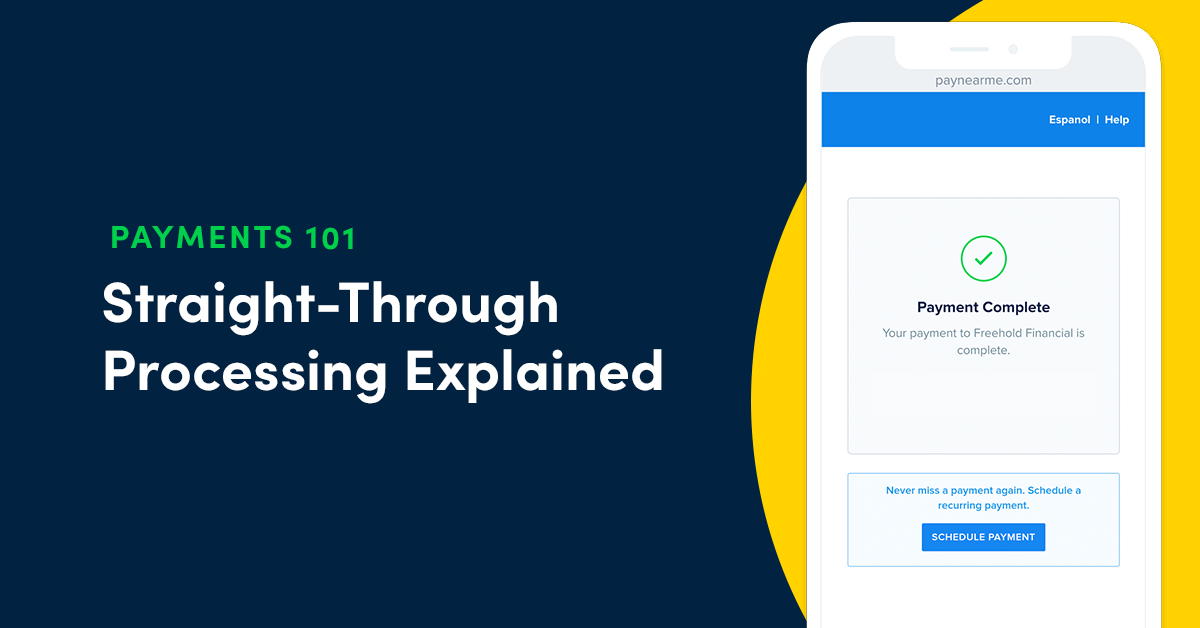Straight-Through Processing Explained: How It Works and Its Benefits

Today, the digital revolution has refined the lifecycle of financial transactions. What could traditionally take hours or even days can be automated in just a few minutes or less. One of the ways in which the financial market has been streamlined is through the use of straight-through processing.
What is Straight-Through Processing?
Straight-through processing (STP) is a process used by financial institutions to speed up processing transactions by eliminating manual input by humans and streamlining data sharing across multiple points. Today, STP is popularly used in bill payment processing. From initiation to the final settlement, the entire payment process is accomplished with automated technology.
Straight-through processing is critical if you want to maximize margins and reduce inefficiency – giving your staff more time to focus on other important things in the business. STP also reduces the chance for errors due to human error, typing mistakes, interrupted phone quality, etc.
How Straight-Through Processing Works
Straight-through processing is especially valuable for billers with regular recurring customers, such as auto lenders, mortgage servicers, municipalities, and similar merchants. These organizations benefit from a streamlined payments process that minimizes costs associated with each customer payment.
Straight-through processing is more of a concept than a process, involving many different technologies and payment flows. The main technologies that make this process possible include:
- Optical character recognition (OCR): Helps to convert physical documents into digital by scanning them for data and sufficiency that can adequately feed the downstream systems.
- Digital signing: Eliminates the need for paper forms to capture consent and approval.
- Workflow tools: Route documents automatically based on your business’ rules.
- Reconciliation tools: Ensure data is synchronized across all systems.
- Monitoring, viewing, and mapping tools: Allow data to be monitored, viewed, and mapped from multiple points across systems.
- Electronic payment processing (EFT): Helps to collect payments digitally without the need for manual processing.
As the reliability and capabilities of these technologies advance, the STP process becomes leaner, faster, and more convenient.
How Straight-Through Processing Can Help Your Customers
Convenience and reliability make STP desirable for your customers – especially for Gen Z and millennials who are drawn to the use of technology in their daily lives. With STP in practice, customers benefit from:
- Secure digital transactions: Electronic payments encrypt customer accounts, protecting against fraud and theft of confidential information.
- Elimination of financial errors from manual processes: Rekeying information into multiple systems introduces potential mistakes and even lost transactions. Automation avoids these errors.
- Faster completion of financial transfers: Especially in financial transactions such as investments, speed can make a significant difference in portfolio profitability.
- Less time spent reconciling accounts or resolving disputes: Fewer letters or phone calls to customer service to straighten out errors.
How Straight-Through Processing Solves Business Problems
Accounts receivable and accounts payable departments have traditionally spent a great deal of time balancing financial transactions and reporting results. There is often a delay in processing business accounts to close financial ledgers, especially when discrepancies are discovered.
Straight-through processing speeds up the payments process and significantly improves accuracy, resulting in more timely financial closings. The primary benefits of implementing straight-through processing for businesses include:
- Reduction in time spent managing payments: There’s no need to get payments through multiple processes and departments to complete a transfer.
- Lower costs: Automation reduces handling and personnel requirements, lessens the need for support teams in resolving payment errors or disputes, and reduces fees charged by financial institutions for incorrect transactions.
- Increased security: Eliminate manual keying errors, compliance scope and entry points for breaches.
- Increased business efficiency: Managing payments electronically facilitates easy integration with other business systems.
Smart Ways to Increase Straight-Through Processing
If your business is still struggling with tedious payment processes, consider incorporating straight-through processing in the following ways:
Include QR Codes on Statements
To convert customers who prefer paper statements, you can digitize the payment process by including a QR code on each statement that initiates a payment flow.
Simply scanning the QR code with a smartphone will then take your customers directly to an online portal that allows them to pay electronically and securely. This self-service payment option saves your customers time and money in checks and postage, while your business gains access to funds faster.
Send Automated Payment Reminders
Make it easier for customers to pay bills on time and online by sending them automated text messages, emails, and app push notifications with secure links to a payment flow. Make sure to optimize these reminders’ delivery time and frequency to maximize your response rates.
Redirect Cash Payments
Using a service such as PayNearMe, you can send payment barcodes to cash paying customers. These customers can then scan these barcodes at local retailers, including 7-Eleven and CVS, and complete a cash payment in seconds. This payment is then sent digitally to your business, with zero additional processing time from your staff.
Focus on Efficiency and Customer Service with Straight-Through Processing
Your customers have better ways to spend their time than calling customer service to inquire about incorrect charges or missing payments on their accounts. They also expect their payments to be posted correctly and on a timely basis.
New payment methods continue to evolve, making it easier and faster to pay for products and bills. Straight-through processing is the automated solution to keep pace with processing these payments quickly and easily.
Want to improve your straight-through processing? PayNearMe is the modern and reliable payments platform that helps you collect every payment, every time. Contact us today for a hands-on, interactive demo.



